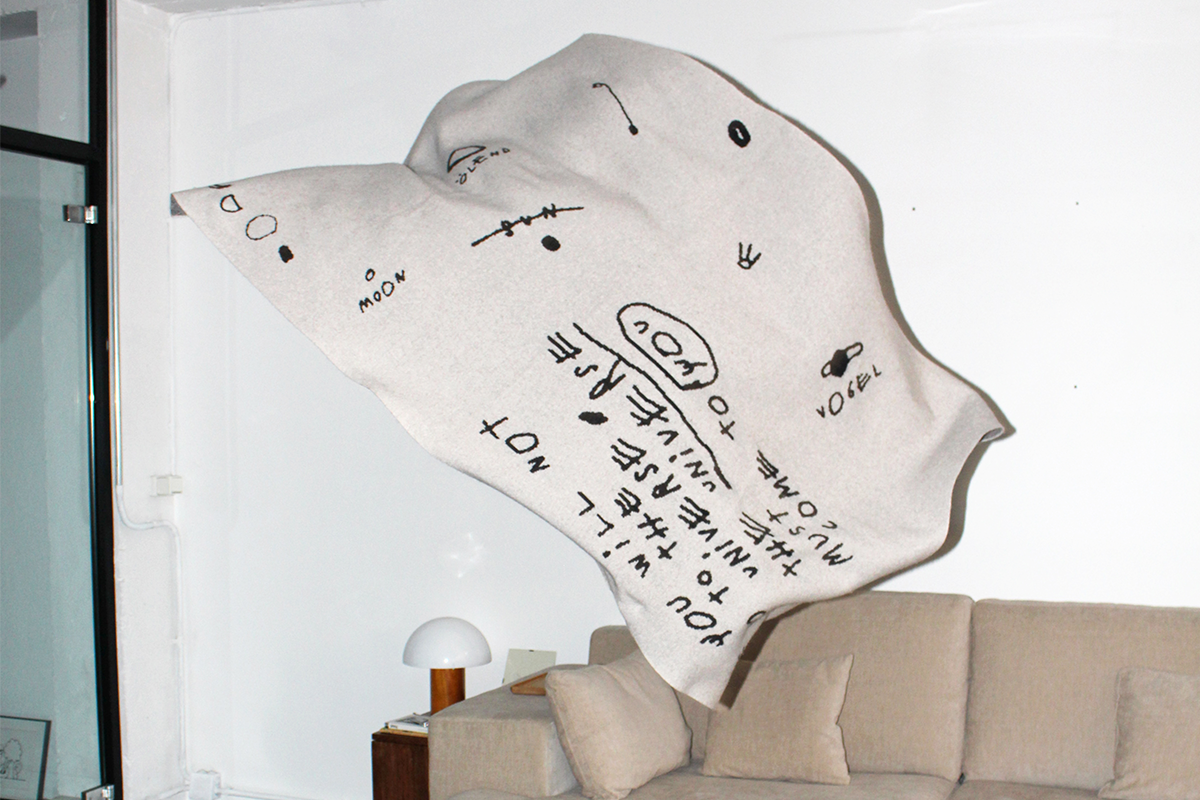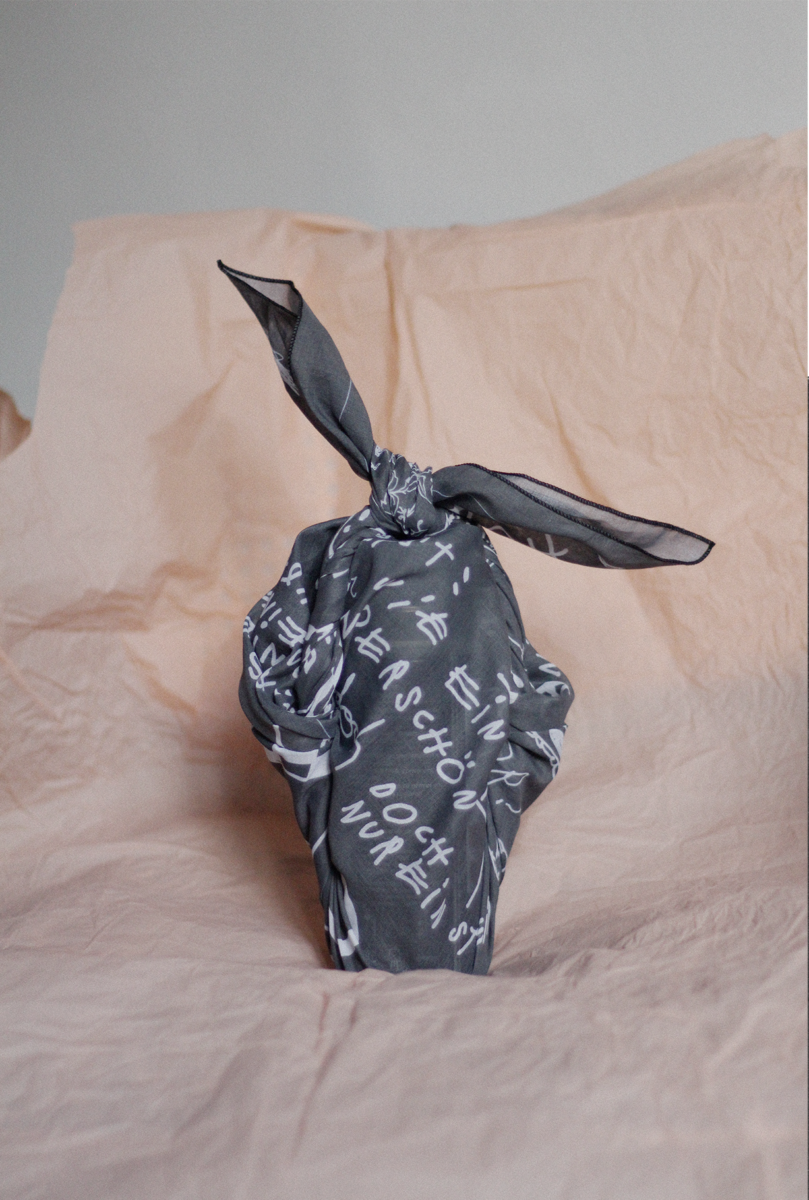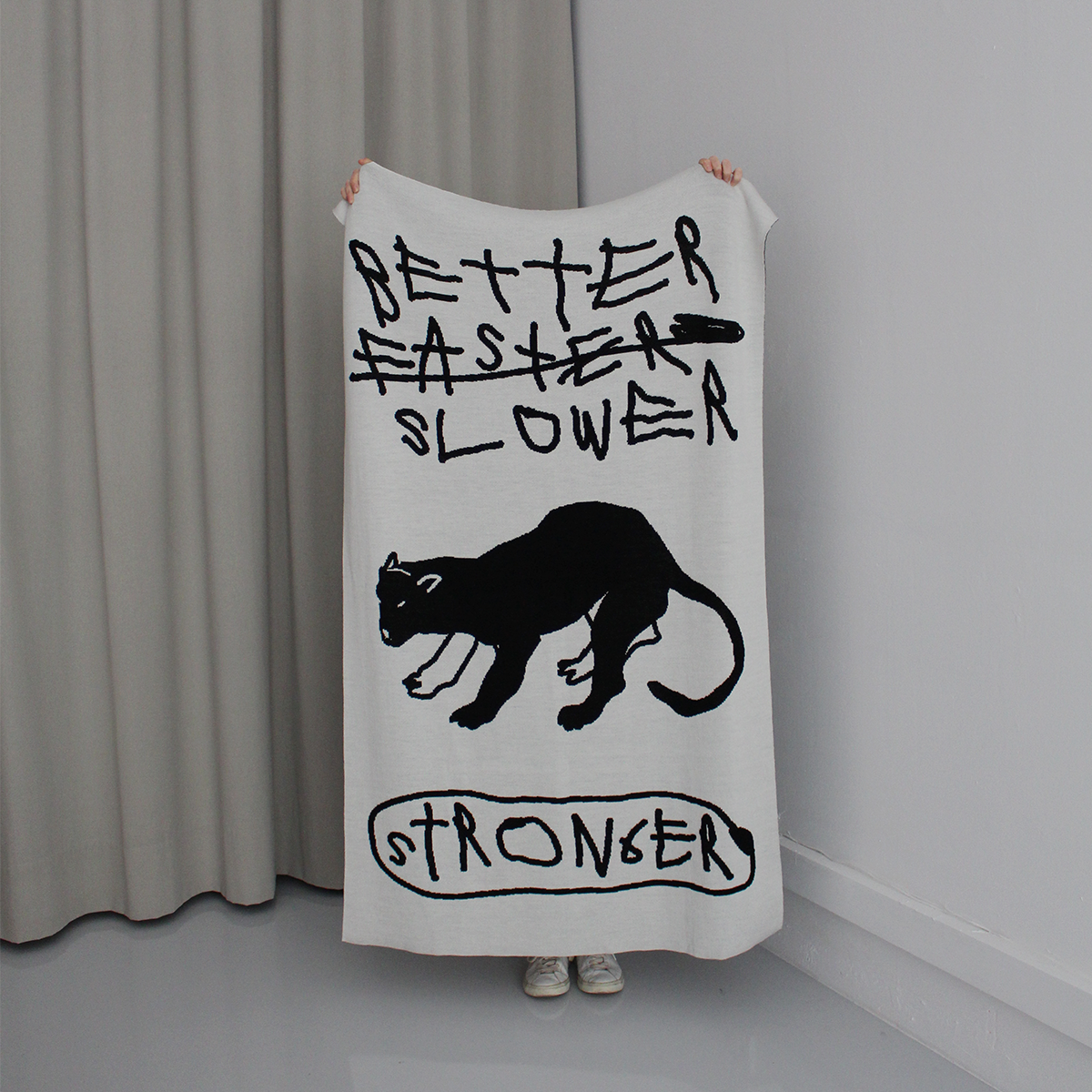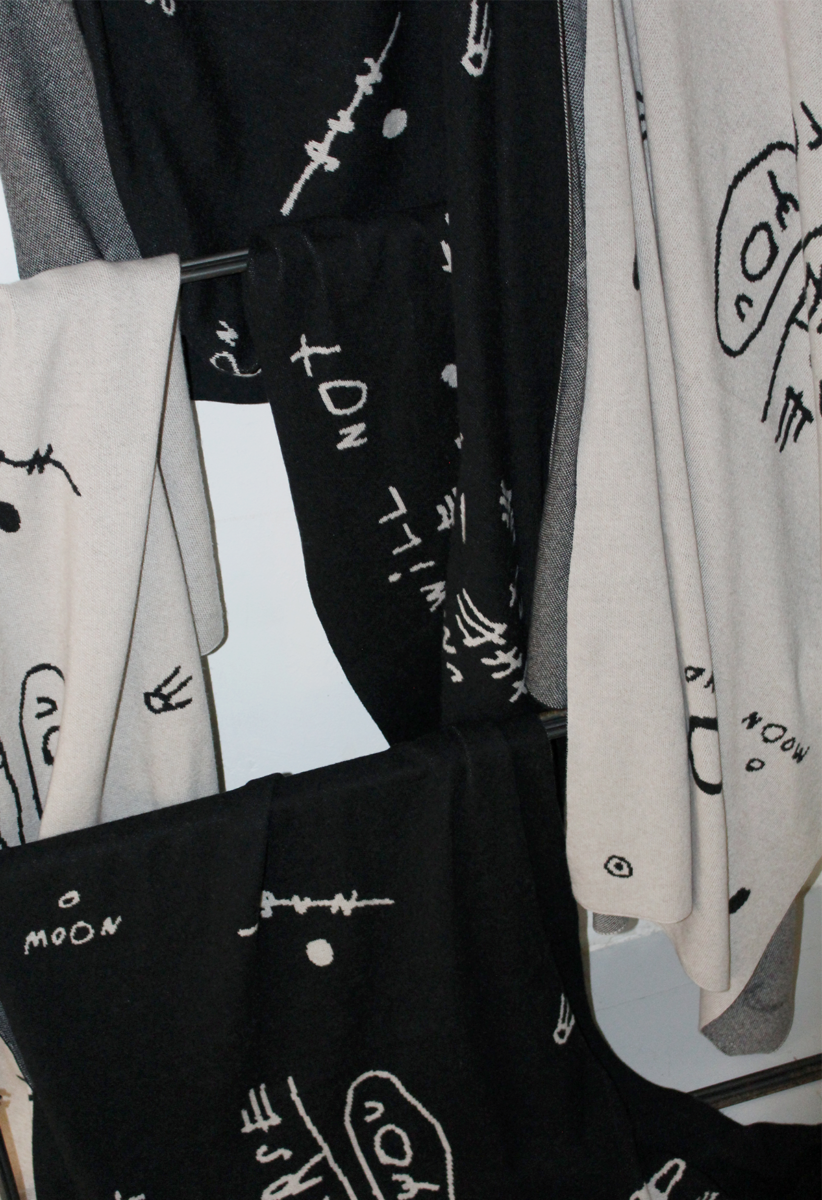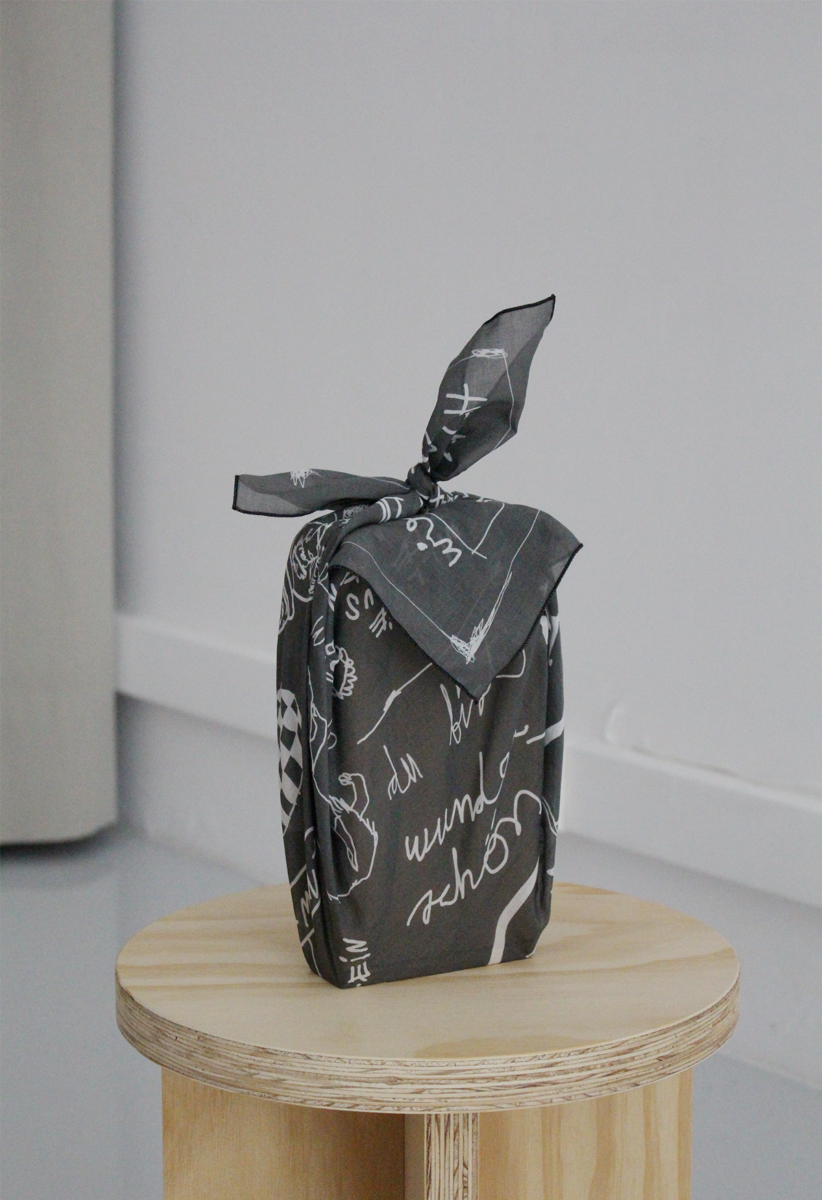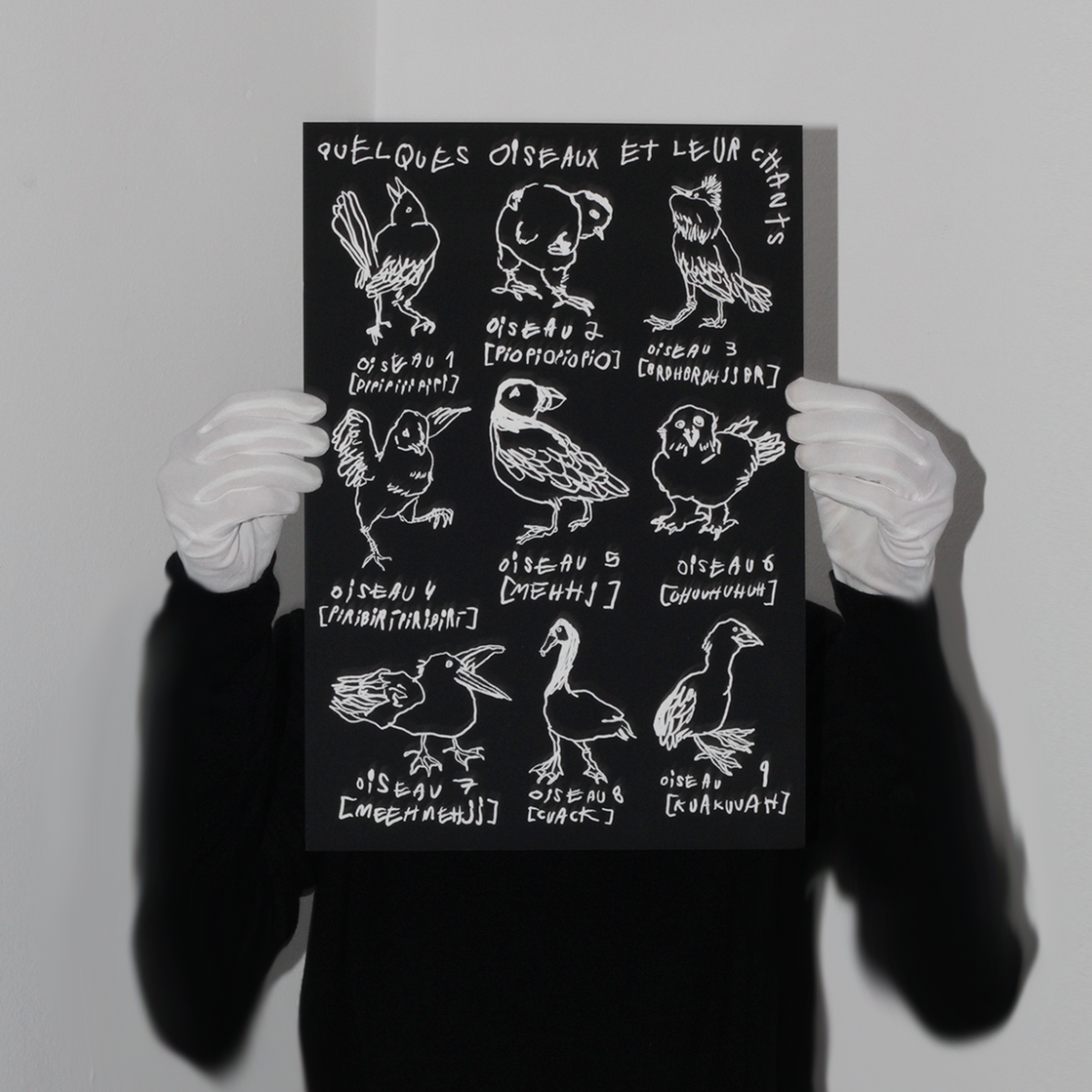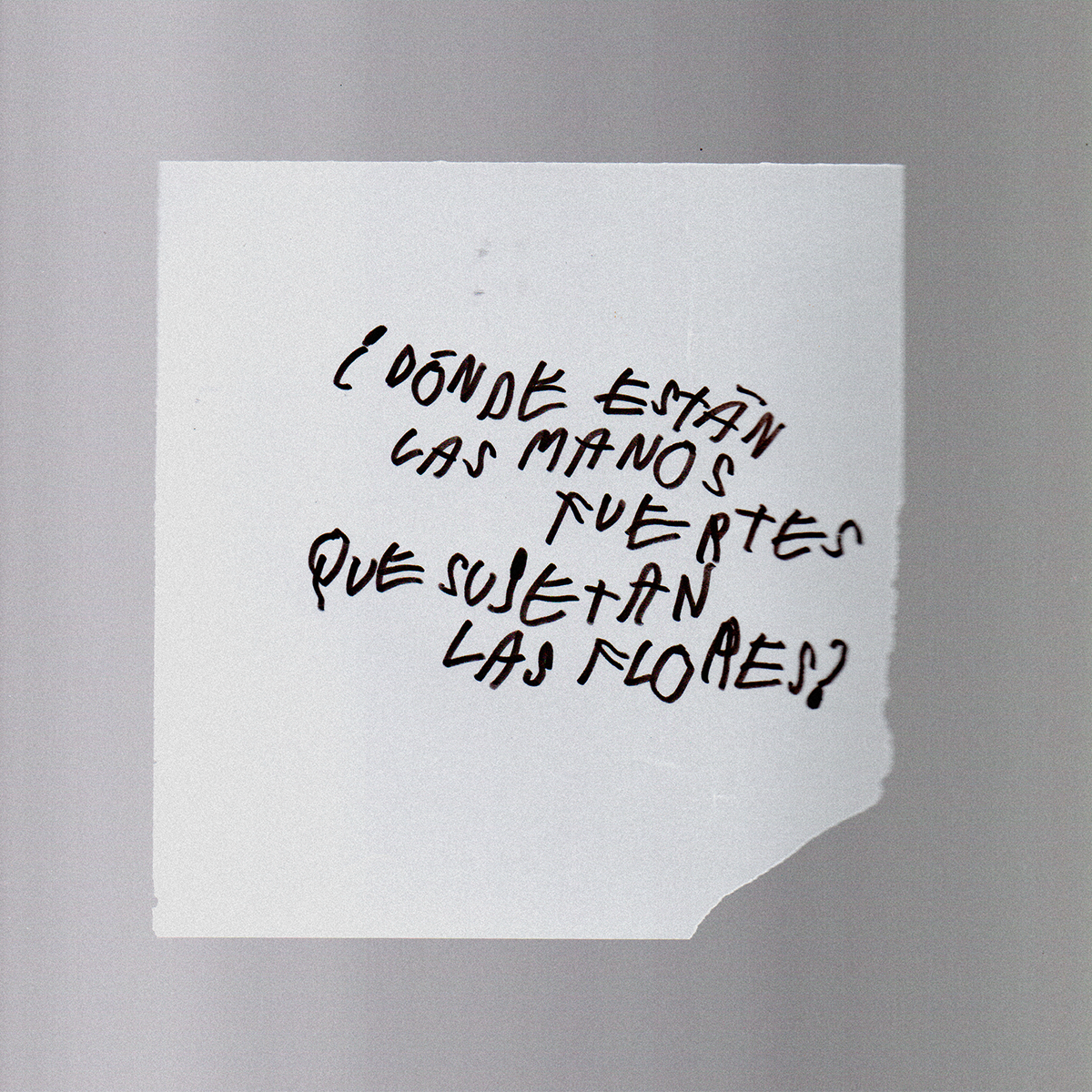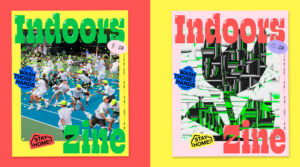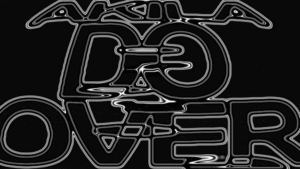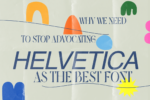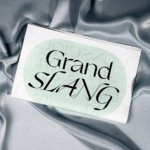In art, writing has its place as something that can bring a sense of universal narrative. Whereas the language or writing system might be quite specific, its universality comes from firstly, the visual language of how we ‘dress up’ writing and words, and secondly, the knowing between humans that the act of writing itself pours out via a direct thread from within—notes from the mind and body wrapped up as one, that spill onto paper or canvas in a system of historical, cultural, ancestrally meaningful shapes. For Olot-born, Barcelona based Artist Alícia Vogel (@aliciavogelvogel), letterforms emerge as shapes integrated with the illustrative elements of her work; imbuing her pieces with an expressive nature that allows them to host parts of her intuition externally, and express the mysticism that exists in all of our inner-worlds.
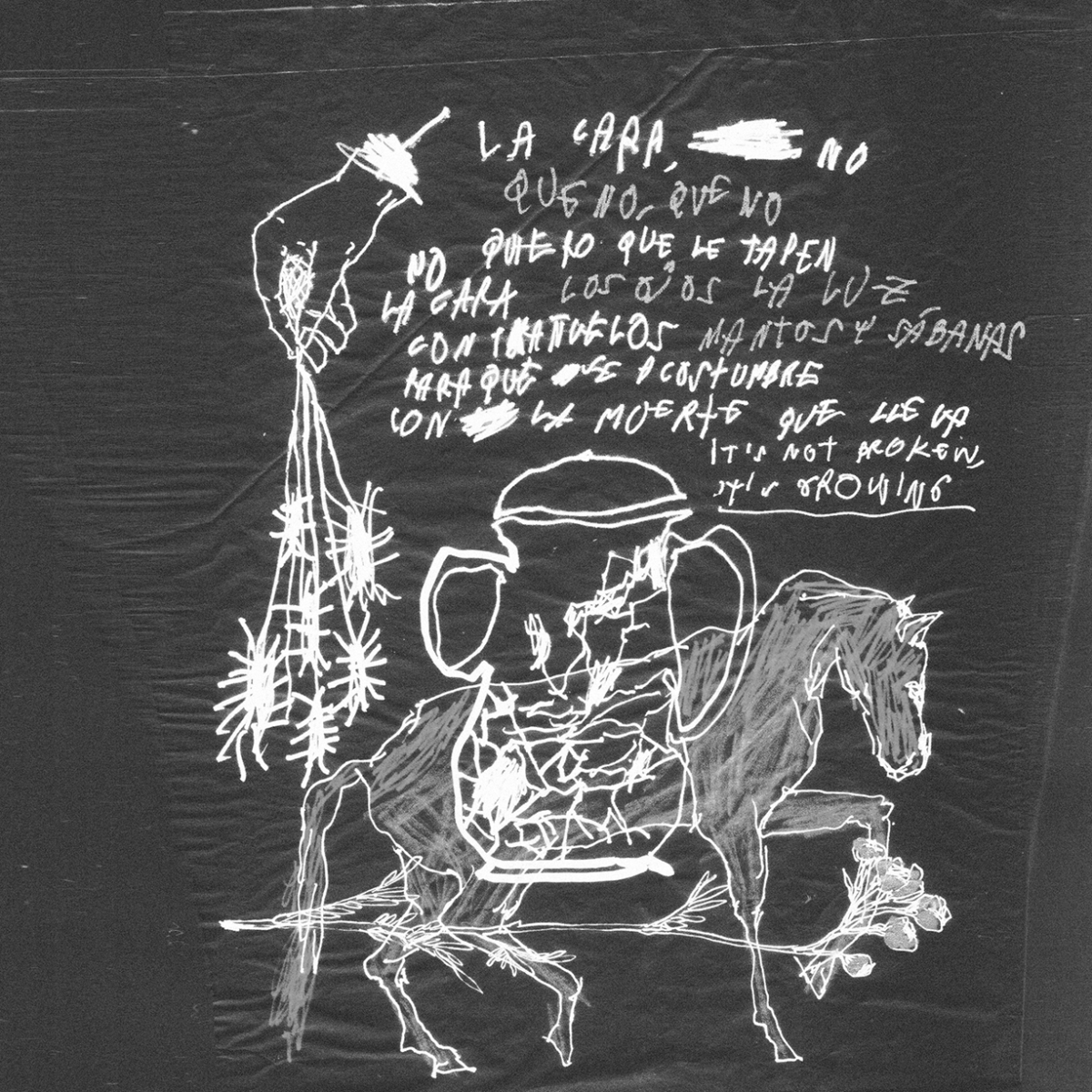
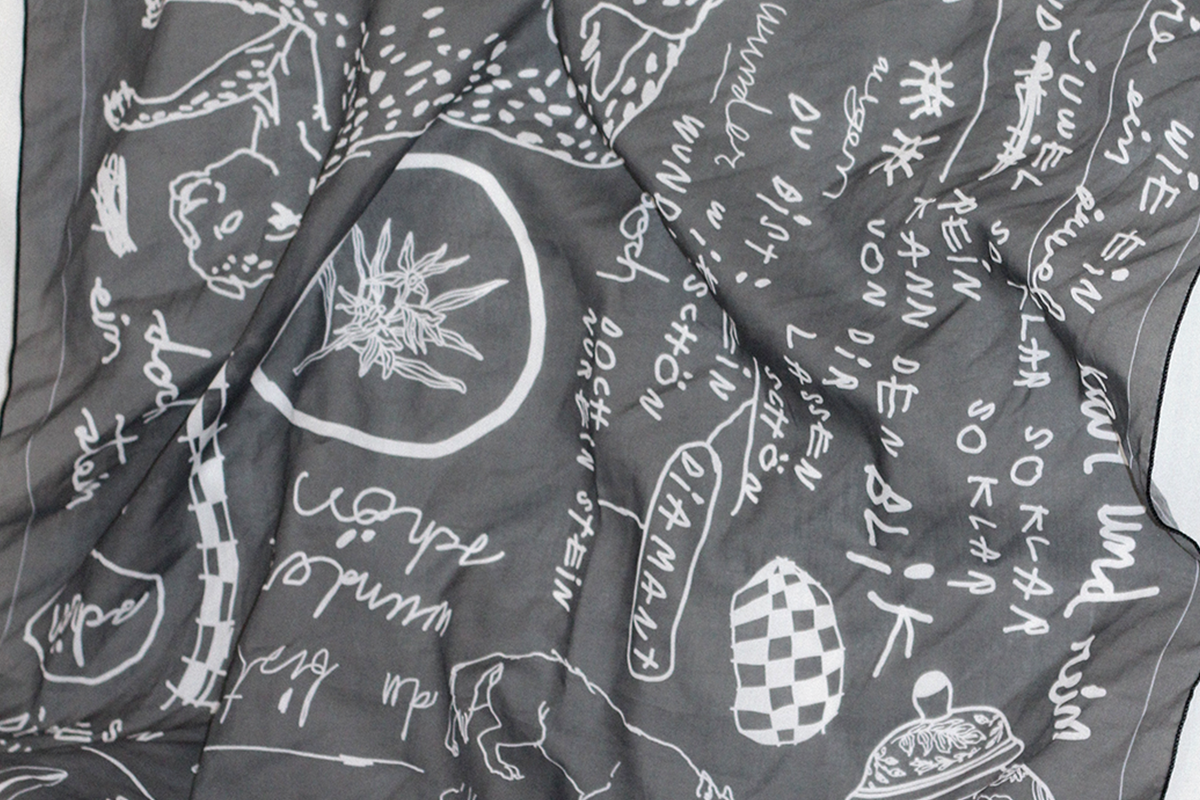
Trained as a fine artist specialised in engraving and screen-printing, Alícia says, “I started adding letterforms to my pieces when I was immersed in the process of engraving, writing them backwards because of the flipping image. Then I developed my very own typo writing with my left hand (I’m right-handed). It’s a very non-learned way to express messages, whatever they are, intuitive and primitive shapes, like if it was the very first time writing—a childish, unique way of scripture, where the mistakes are beautiful and super interesting as a part of the artwork.” Alícia’s fluid, intuitive, mysterious connection with words is interestingly juxtaposed by the angle assumed by Artist and Writer Saucy Sez (@saucysez). Sez draws from the powerful roots of words Alícia describes, but tends to position her letterforms as a more deliberate driving force in the work: creating strong, purposeful clashes between materials, aesthetics and language to explore and problematise systemic, societal structures which, through the art, are able hit home and land with viewers on a personal level.
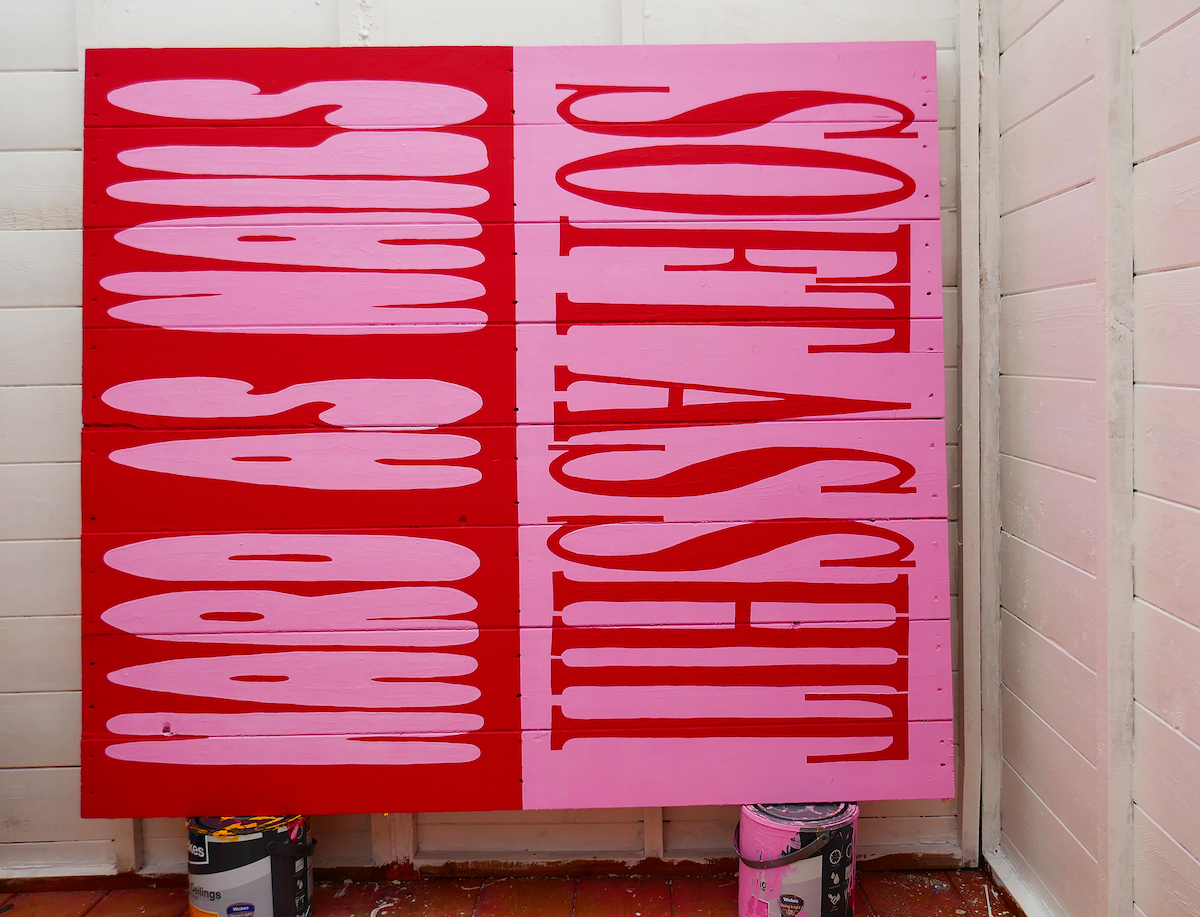
“My work is autobiographical in parts, leaning on experiences and relationships as its foundation,” Sez says, “Through poetry and text I delve into varying themes such as class, gender and power structures then attempt to highlight how these play out in regards to mental health.” For Sez, letterforms can be dressed up in references to glitz and glamour—to public information or advertisements and slogans—in a way that tugs at the collective memories of the society she’s grown up in; encouraging people to consider messages about class, gender and power through a flipped or investigative lens.
“When I think of letterforms, I’ve always been drawn to advertisements, and how certain fonts or phrases can become really recognisable,” Sez elaborates. “I find it really interesting how certain letterforms can raise differing emotions within us; nostalgia, frustration, desire. I play around with this, using certain letterforms to can trick the viewer into thinking the message will be different than what it in fact is when actually read.” The letterforms in Sez’s work bridge between frank communication and more abstract, emotive pathways in art; saying something direct in what is written, while it also pointing to economical and cultural references attached to people’s experiences and memories.
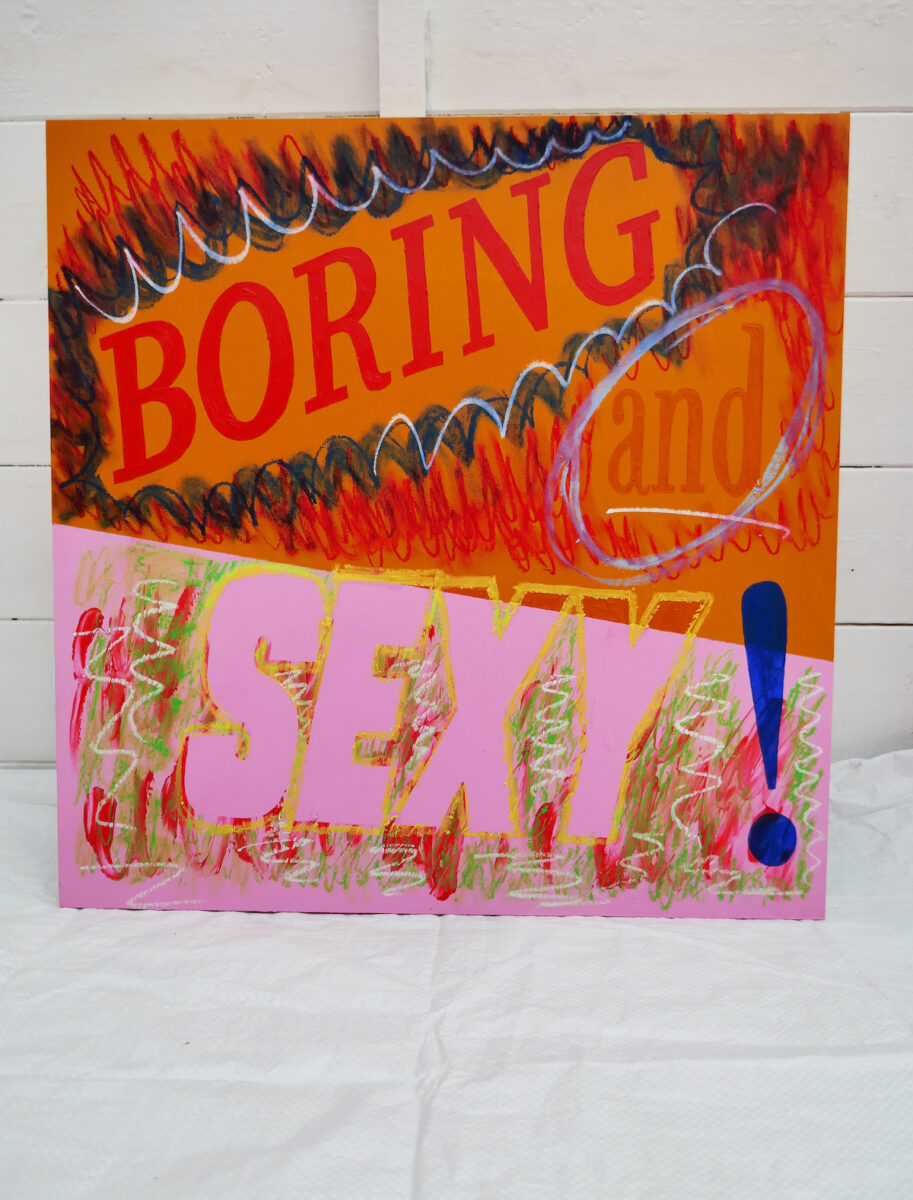
Whether more abstract or bold and direct, Alícia and Sez both introduce a layer of critique into the visual fabric of their work through the integration of letterforms. The visual manifestation of language brings a poignant dimension of contemplation to their artworks, adding a different narrative or conversational element to an otherwise symbolically-driven medium. Alícia notes she enjoys the conversation between artist and viewer that comes up with the integration of letterforms, saying, “Writing is actually a direct way to reach the person who is in front of the piece…Sometimes the hermeticism or conceptualism in art could be difficult to explain (if there is something to explain), and the answer could be an “I don’t get it”, “I don’t understand it”. I get these answers, because sometimes the relation between all elements in my pieces are absolute nonsense to others, but I also get the mystery and curiosity from the observer, and the best thing is when others find new meanings in the piece…”
“…I usually add sentences to complement the whole narrative with the drawings,” she continues, “but I also tend to include text related to songs, because I feel I can bring the observer to a specific and diverse moment of their lives. We are connected to songs and the feelings we have attached to them, so it’s kind of an involuntary memory exercise where everyone can identify, even though the drawings in the piece are not from the observer’s imagination.” This play on memory and rewiring or redirection also features in Sez’s work, by way of plucking words usually found in one setting, and depositing them in another to open up conversations; juxtaposing type and letterings with materials that touch on matters of class and our differing personal histories.
“I flip between using fabrics such as heavy or plastic tarpaulin and then softer cottons or nylon as hanging pieces,” Sez says. “I also tend to use a lot of wood as a medium to paint on. I’m really into creating these opposites or tensions between the words and the material used. Softer words against wood, and harder words against cotton. I think growing up with my Dad and Brother working as trades people, I’m somehow drawn to all of these building site materials. I use breeze blocks to support my paintings in shows. I think coming from a background where art was not seen or discussed at home, I somehow want to forge the two worlds together. Again I like to take from the advertising world, think tv commercials or billboards or magazines. That world speaks glamour and glitz to me and I try to challenge the viewer by moulding the two together.”
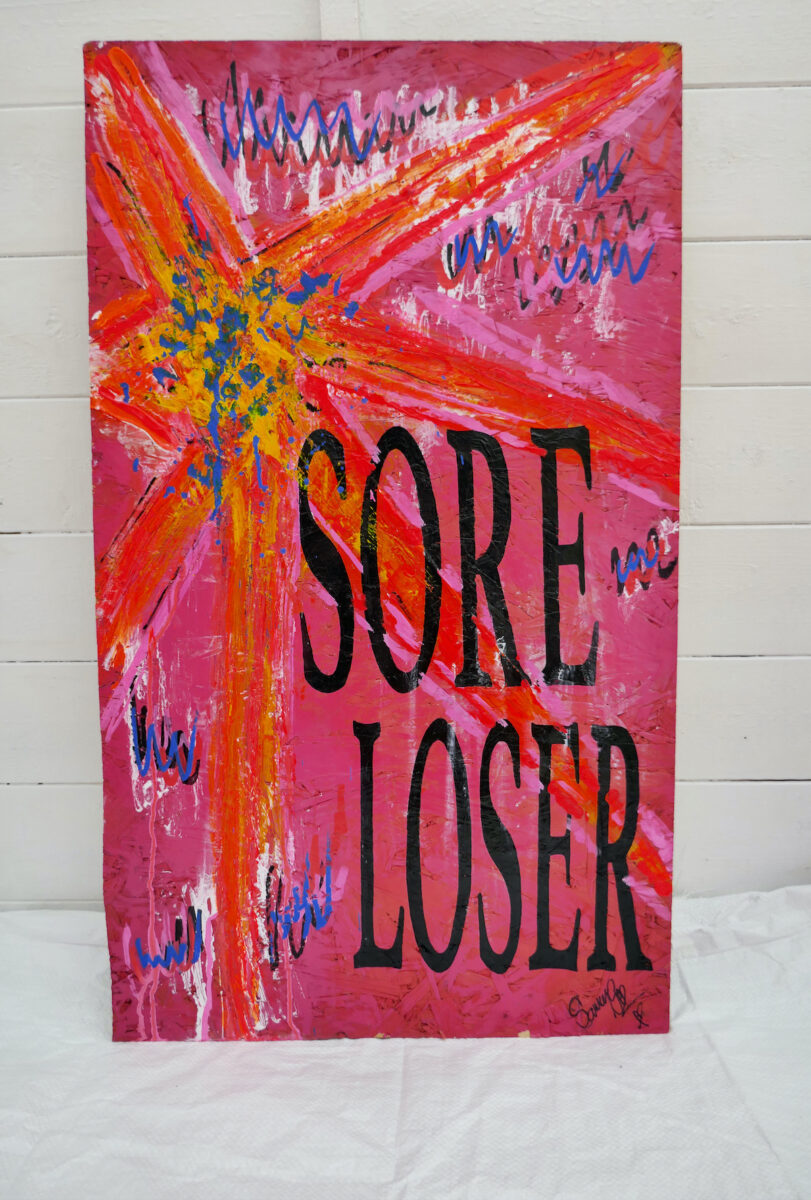
Though words in art are powerful as vehicles to share a message or construct a narrative, they’re also able to disrupt or fragment narratives and symbolic order in their own specifically impactful ways. Alícia’s use of letterforms really hammers this home; by expressing the messy, nonsensical multifacetedness of human nature though the very tool we’ve created and nurtured to pander to our desire for sense, meaning and order. Words help us form narrative, but importantly, when allowed to break free from their usual function and order—in the way Alícia’s dreamworld, intuitive letterings do—they can directly deconstruct the idea of coherency and narrative and reflect the fragmented, messy, confusing nature of what it is to be human and to have a human brain. Put simply, nonsensical or broken words and phrases directly disrupt the coherency we all crave on some basic level: it’s a situation where the tool we use to command narrative and order is dropped into the context of art—where we allow things to not make sense, or we expect our view to be altered.
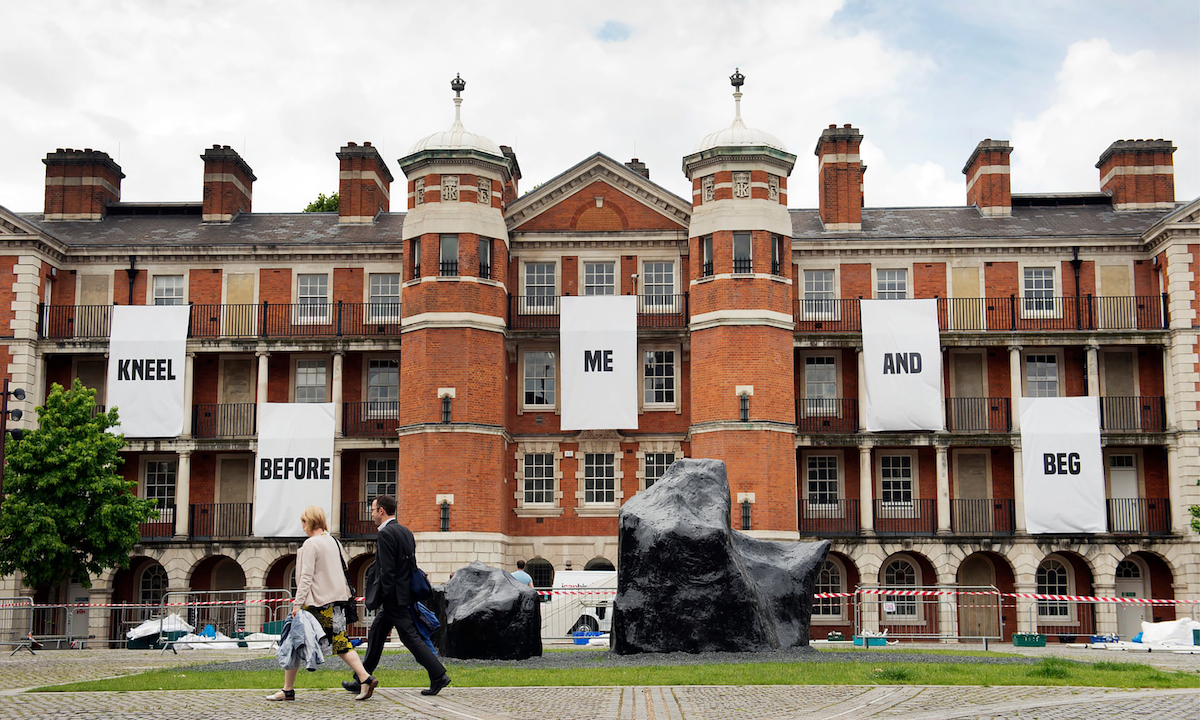
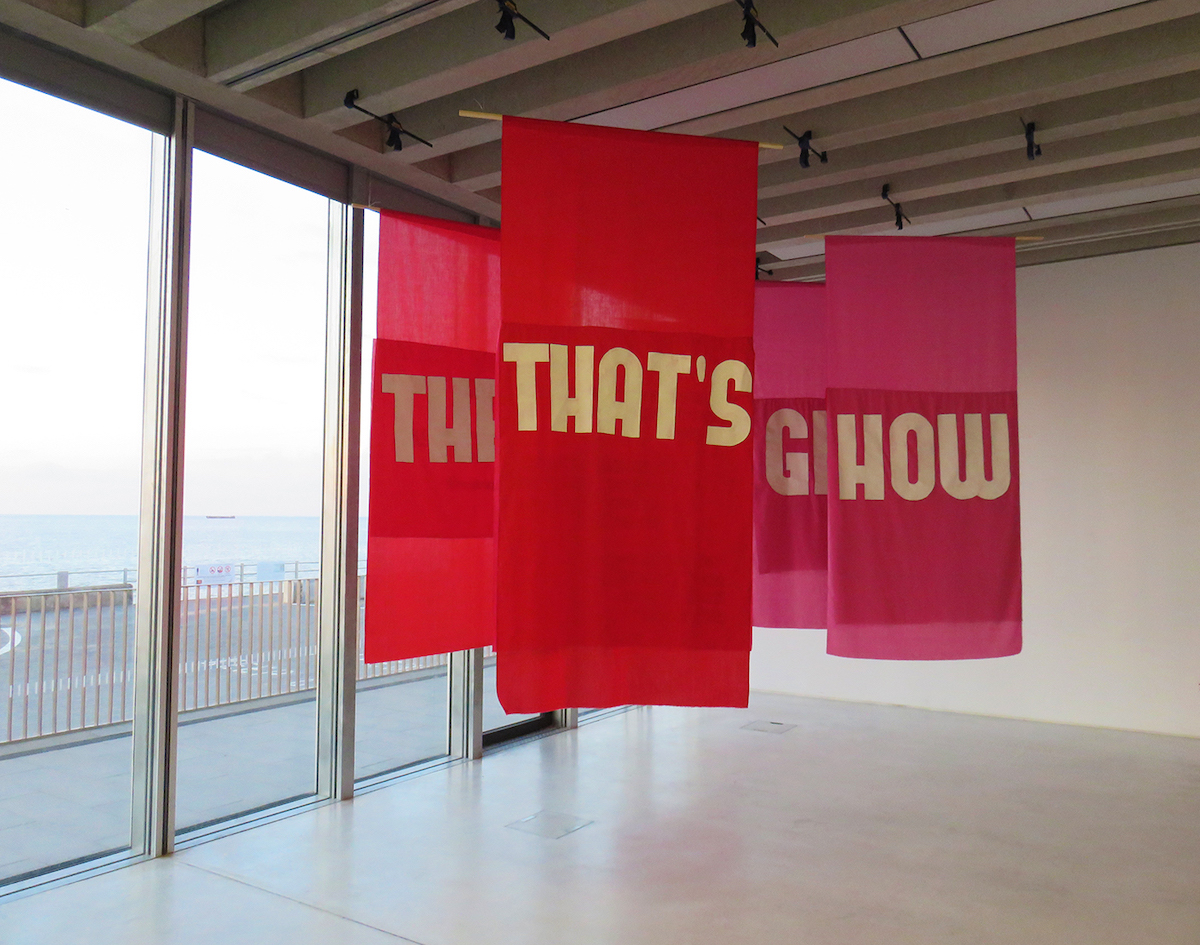
Sez, on the other hand, harnesses this power to ask questions and pose alternatives. As she says, “I want to challenge the audience on their views and their biases. For example when I write about class, I want to celebrate being working class whilst also highlighting the issues within our class system. Letterforms allow me to create a positive or negative angle to certain poems or phrases. A letterform can allow a word to be shouted or whispered; changing the interpretation.” Interestingly, Alícia notes, “Long ago, the only letters we saw in art pieces were the signature of the artist (even hidden), but now, letters are part of the piece, if not the art piece itself.” The prevalence of letters in artwork nowadays, for both Sez and Alícia, seems very much connected to social media. “I think the use of social media and the use of Instagram specifically has without a doubt changed how we view and create art,” says Sez. “Art in lots of ways is way more accessible now because of the internet. I love that! Though I also find that because of this, a lot of artists can feel boxed in, quite literally making work that is seen mostly through a small square box.”
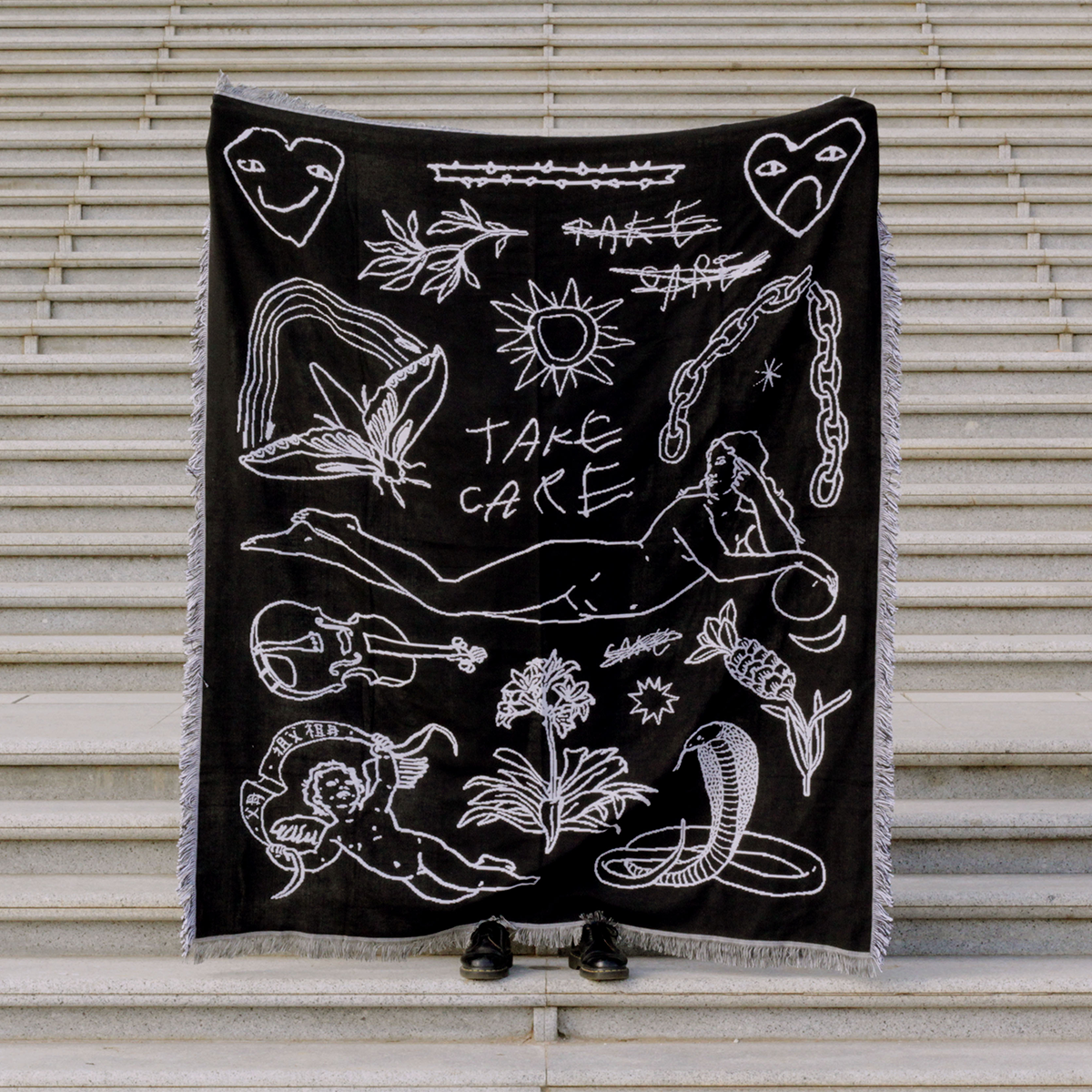
In art, both Sez and Alícia find new contexts for the words or letterforms they use. Their letterings are given parameters to be kind of anti-symbolic, or to get outside of their usual sequential, sense-making order, in a way that causes us to question ourselves; breaking the comfortable, expected hierarchies we see upheld in oppressive systems (both societally and personally), and creating a space of expansion and conversation. Thank you so much to Alícia and Sez for sharing their thoughts today!

